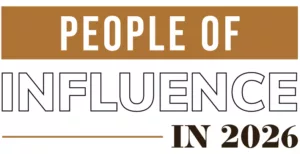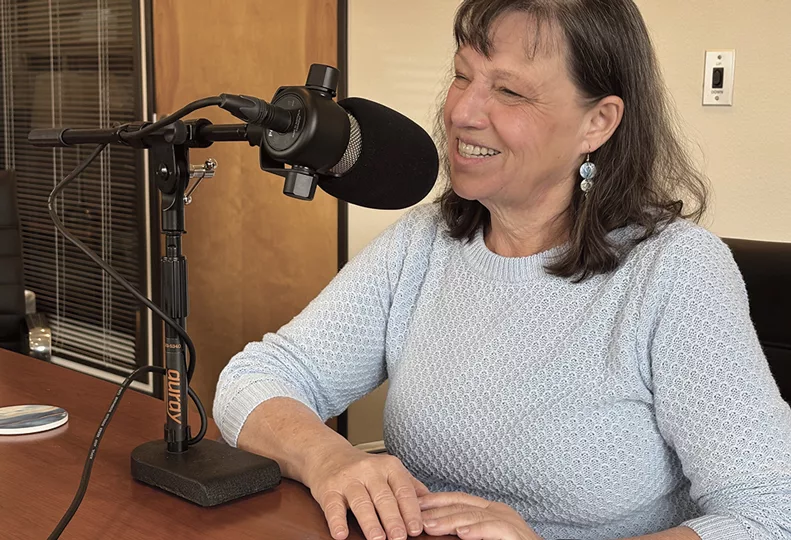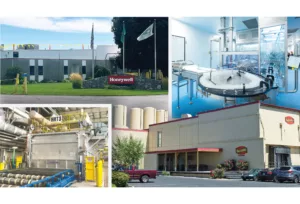
Five Takeaways: The Health of Health Care
with Providence INW Chief Executive Susan Stacey

Earlier this month, the Journal of Business hosted Susan Stacey, chief executive of Providence Inland Northwest, for its most recent Elevating The Conversation podcast about The Health of Health Care.
The Elevating The Conversation podcast is available on Apple Podcasts, Amazon Music, Spotify, and elsewhere. Search for it on any of those platforms or the Journal's website to hear the entire conversation, but for now, here are five takeaways—edited for space and clarity—from the episode, which is about 40 minutes long.
1. Health care systems are still losing money, just not as much as they once did. Health care systems are still losing money across the continuum. That has not changed.
One of the reasons that's happened is, like for most businesses, our costs have gone up exponentially for labor. Supplies cost more. And then, as folks see in their own personal life, the cost of pharmaceuticals is absolutely skyrocketing. That's not something that we can easily adjust because patients who come into the hospital need medications.
Some of those things are totally outside the control of the health system, but unlike most businesses, our costs continue to increase, but the money we get in has stayed flat. Most of those are negotiated contracts with our payers, and those contracts last for years. We are just now negotiating new contracts with our payers.
The other piece is our government payers. That's a huge part of how our losses have happened, because our government hasn't increased its reimbursement rates. In Spokane, about 75% of patients who come into our facilities are some sort of government payer, either Medicare or Medicaid. The government covers, depending on the payment source, 50% to 85% of costs. Not of charges, but of costs. So that math doesn't work very well.
During the first years of the pandemic, there were government dollars to help mitigate that. Those went away about two years ago.
In 2023, Providence, just in this Spokane market, lost approximately $180 million. In 2024, we reduced those losses to about $89 million. That's better, but $89 million is still not sustainable. We need to drive that down over these next few years to be able to reinvest in our health care system.
2. Charity-care investments remain strong. Charity-care investment continues to be one of the things that is strong despite the headwinds that we've had financially.
Charity care loosely described comes in three buckets. One is the write-offs with Medicare and Medicaid, because of their low reimbursement levels. The second bucket is our commitment to graduate medical education and the work we write off in continuing our educational commitment. And those two together, we're at $167 million to $168 million.
We also do some focused local grants, and that's the part that is intentional and that I'm proud of. That was about $2.5 million that was given to local nonprofits in our town, to provide services to meet ongoing needs. Everything from food insecurity and housing insecurity to respite care, as well as several programs that are led by women and people of color.
Moving forward, I see charity care continuing to be the same proportion of our overall cost structure. I think the part that does change is what bucket everything goes in.
3. Staffing woes have improved. One of the bright spots is that we have significantly reduced our dependence on agency staff, or traveler staff, in all areas. We have a small number relative to our overall number of caregivers, and the hiring is going much better.
Post pandemic, we're also seeing folks who were travelers are now coming back because they want a home. They want a work home and a place to buy a house. For as high as the housing market is here, it's much better than many other places. So, it's a very appealing place to work.
Even when we are using travelers, which we still do for long leaves of absence or critical gaps, the rates for travelers have dropped way down now that we're out of the crisis. Our traveler costs are nothing close to what we were paying during the pandemic.
In general, I feel really good about the hiring successes. We hired over 1,100 people last year, including over 100 physicians and nurse practitioners.
We're not there yet. We still have a high vacancy rate. I'd call it about 15% to 17% vacancy, in terms of open positions. We're a big organization. We're always going to have some turnover. We're always gonna have a position-vacancy rate, so it's not a crisis, but boy, we'd like to get ahead of that curve.
4. Health systems focus on growth in communities, rather than on hospital campuses. We're moving care to a place that's both lower cost but also earlier intervention. I think we'll continue to see health care move outside of the big white buildings on the hill, and that's good for patients.
We want people to get their care as close to home as they can, and having to drive downtown for everything is not a viable solution.
Also, when we hire new doctors, they need new places to work, and that takes an investment in those physical sites as well. I think we will continue to see—and we are in need of—more ambulatory surgery centers in Spokane County.
Simple, noncomplex surgeries can be done in an environment that gets you in and out faster, in a safe way for those lower risk surgeries. I think we will continue to grow in those areas as well as the interventional space, space for diagnostics, and simple types of care. They will still be close to hospitals, but not always in a hospital to do testing and diagnostic evaluations.
5. The planned $42 million Heart Institute modernization will start soon. The Heart Institute provides a majority of outpatient services for our cardiac specialists within the Spokane area. When the Heart Institute was built, we had multiple physician practices in the same space. Everyone had their own office, their own clinic, their own front desk, just their own situation.
One of the major changes that's happened over the last 20 years is, more physician practices have been absorbed by health care systems. Making this investment allows us, now that the physicians who are in that setting are all part of Providence, to restructure the Heart Institute into an area where when folks walk in, it feels welcoming, with clinics that function seamlessly together with one area to register, one area to wait while you go to your doctor.
We're also changing the back-of-the-house functions to being efficient so that the space can actually be allocated to the diagnostic imaging, the physician visit, the nurse consult area, and other areas.
We want to expand services our patients need to access without having these large waiting rooms that take up expensive real estate and don't actually meet a patient need. We can get people in and out faster.
This interview has been edited for length and clarity.



_web.webp?t=1764835652)
